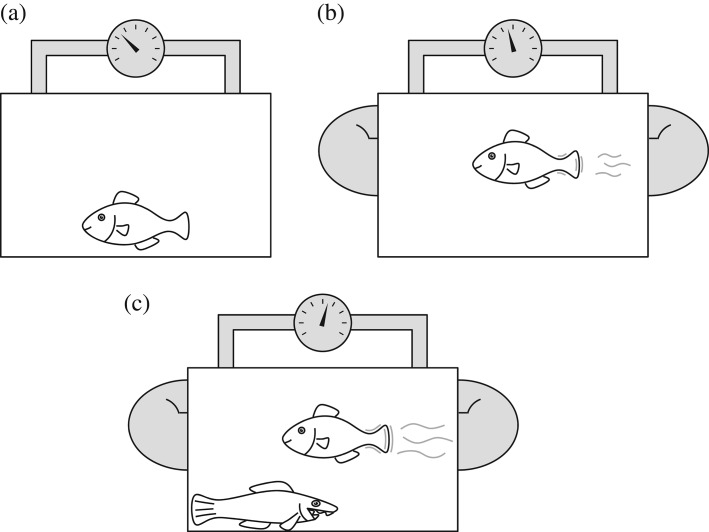Figure 1.
How well do measures in the laboratory approach a real-life setting with predators and trade-offs? (a) Basal or standard metabolic rate quantifies the cost of living while an individual does nothing. This is problematic as it is usually hard work to obtain fitness, where one has to be successful at foraging, growth, survival, mating and reproducing. (b) A more complex picture is painted as costs of various physiological functions can be determined, in particular this has been extensively done for swimming. Locomotion is required for many vital functions in life, and these kinds of estimates are needed to piece together a full-fledged energy budget. (c) By modifying perceived predation risk, trade-offs and non-consumptive effects of predation can be quantified as they affect voluntary rates of, for example, swimming and foraging. Visual contact with a predator or water that smells of predators can induce behavioural changes that can be quantified. This type of laboratory or field-experiment approaches the real-life setting where energetics and survival are joint factors that over time have influenced the adaptation of behaviours and life histories currently observed.

